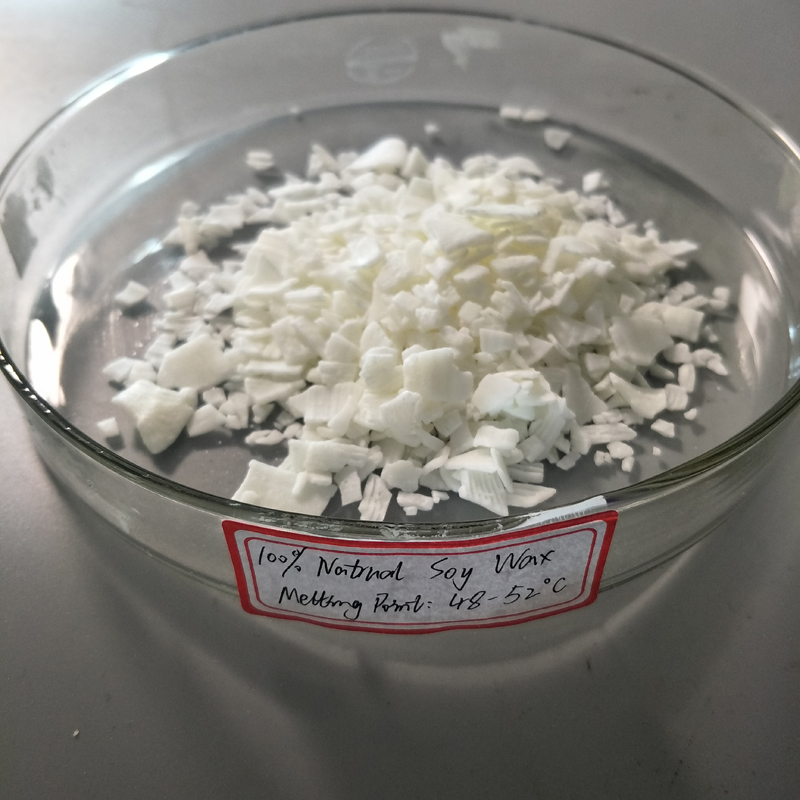Soy wax

Soy wax is made by the full hydrogenation of soybean oil;chemically this gives a triglyceride, containing a high proportion of stearic acid. It is typically softer than paraffin wax and with a lower melting temperature, in most combinations. However, additives can raise this melting point to temperatures typical for paraffin-based candles. The melting point ranges from 49 to 82 degrees Celsius (120 to 180 degrees Fahrenheit), depending on the blend.[4] The density of soy wax is about 90% that of water or 0.9 g/ml. This means nine pounds (144 oz) of wax will fill about ten 16-oz jars (160 fluid ounces of volume). Soy wax is available in flake and pellet form and has an off-white, opaque appearance. Its lower melting temperature can mean that candles will melt in hot weather. Since soy wax is usually used in container candles, this is not much of an issue.
Advantages of soybean wax:
1.100% soybean wax composition, non-paraffin composition, in full compliance with European and American regulations.
2. Low price, timely delivery.
3. Than wax burning time is 30-50% long.
4. Non-toxic environmental protection. Burning products will not produce carcinogens, waste can be biodegradable.
5. Melting temperature is low, save heat, help operators safe production.
|
Items |
| |
|
Acid value(mgKOH/g) |
0.9max |
0.85 |
|
Peroxide number(mmol/kg) |
3.9max |
3.5 |
|
Moisture(%) |
0.05max |
0.04 |
|
Color(Lovibond,133.4mm cell) |
3.0R max |
3.0R |
|
Melting point(ˇăC) |
42 - 54 |
42-54 |
|
Appearance |
fine and white at room temperature, yellowish clear liquid when heating to melt,no odor and impurity |
Complies |
|
Ingredient |
100% hydrogenated vegetable oil without mineral wax |
Complies |
|
Shelf life |
2 year | |
